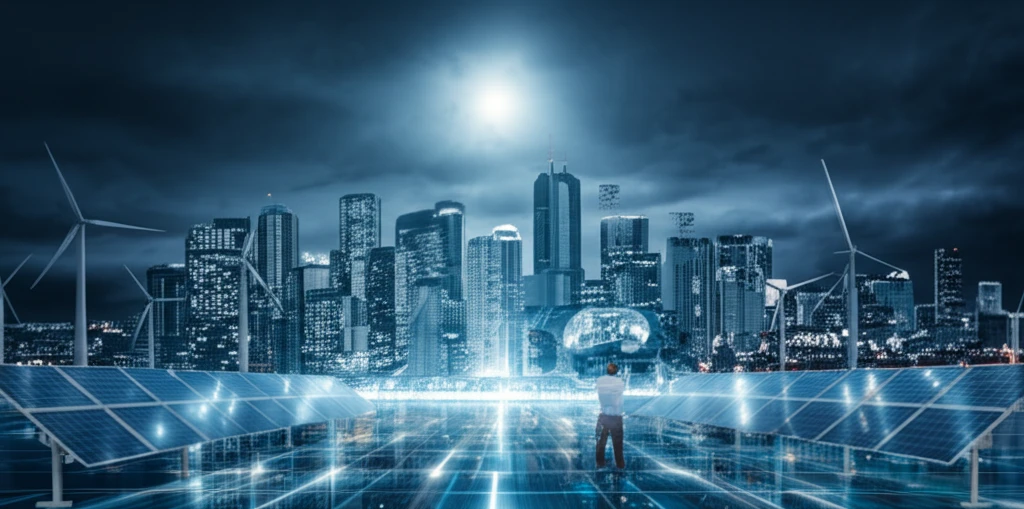
Smart Grids: Revolutionizing Power Distribution for a Sustainable Future
"How cutting-edge technology is making electricity grids more efficient, reliable, and eco-friendly"
The world is undergoing a significant transformation in how it generates, distributes, and consumes electricity. Central to this shift is the rise of the "smart grid," an advanced power distribution network that integrates cutting-edge technologies to enhance efficiency, reliability, and sustainability. This innovative approach addresses the limitations of traditional power grids, paving the way for a more resilient and environmentally conscious energy landscape.
Traditional power grids, often based on outdated infrastructure, face numerous challenges, including energy losses during transmission, susceptibility to outages, and limited capacity for integrating renewable energy sources. These shortcomings highlight the urgent need for modernization and a move towards smarter, more responsive systems. The smart grid emerges as a comprehensive solution, leveraging digital technologies to optimize energy flow and grid management.
Smart grids are not just about upgrading infrastructure; they represent a fundamental shift in how we interact with electricity. By incorporating advanced sensors, communication networks, and data analytics, smart grids provide real-time monitoring and control capabilities. This enables proactive management of the grid, ensuring stability and minimizing disruptions. Moreover, smart grids empower consumers to become active participants in the energy ecosystem, promoting energy conservation and reducing overall demand.
Key Components and Functionalities of Smart Grids

The effectiveness of a smart grid lies in its ability to monitor and respond to real-time data. Smart grids employ a variety of advanced sensors and monitoring devices strategically placed throughout the network. These sensors collect data on voltage levels, current flow, equipment status, and environmental conditions, providing a comprehensive view of grid operations. The data is then transmitted via high-speed communication networks to control centers, where it is analyzed to optimize grid performance.
- Real-Time Monitoring: Continuous monitoring of grid conditions enables proactive identification and resolution of potential issues.
- Advanced Metering Infrastructure (AMI): Smart meters provide detailed data on energy consumption patterns, facilitating demand response programs and personalized energy management.
- Automated Fault Detection and Restoration: Smart grids can quickly detect and isolate faults, minimizing outage duration and improving grid resilience.
- Integration of Renewable Energy: Smart grids facilitate the seamless integration of diverse renewable energy sources, promoting a cleaner energy mix.
The Future of Smart Grids
Smart grids are not just a technological upgrade; they are a vital component of a sustainable energy future. As the world increasingly relies on renewable energy sources, smart grids will play a crucial role in integrating these resources into the power grid. By optimizing energy distribution, reducing waste, and promoting energy conservation, smart grids contribute to a cleaner, more efficient, and resilient energy ecosystem. The ongoing development and deployment of smart grid technologies hold immense potential for transforming the power industry and securing a sustainable energy future for generations to come.
